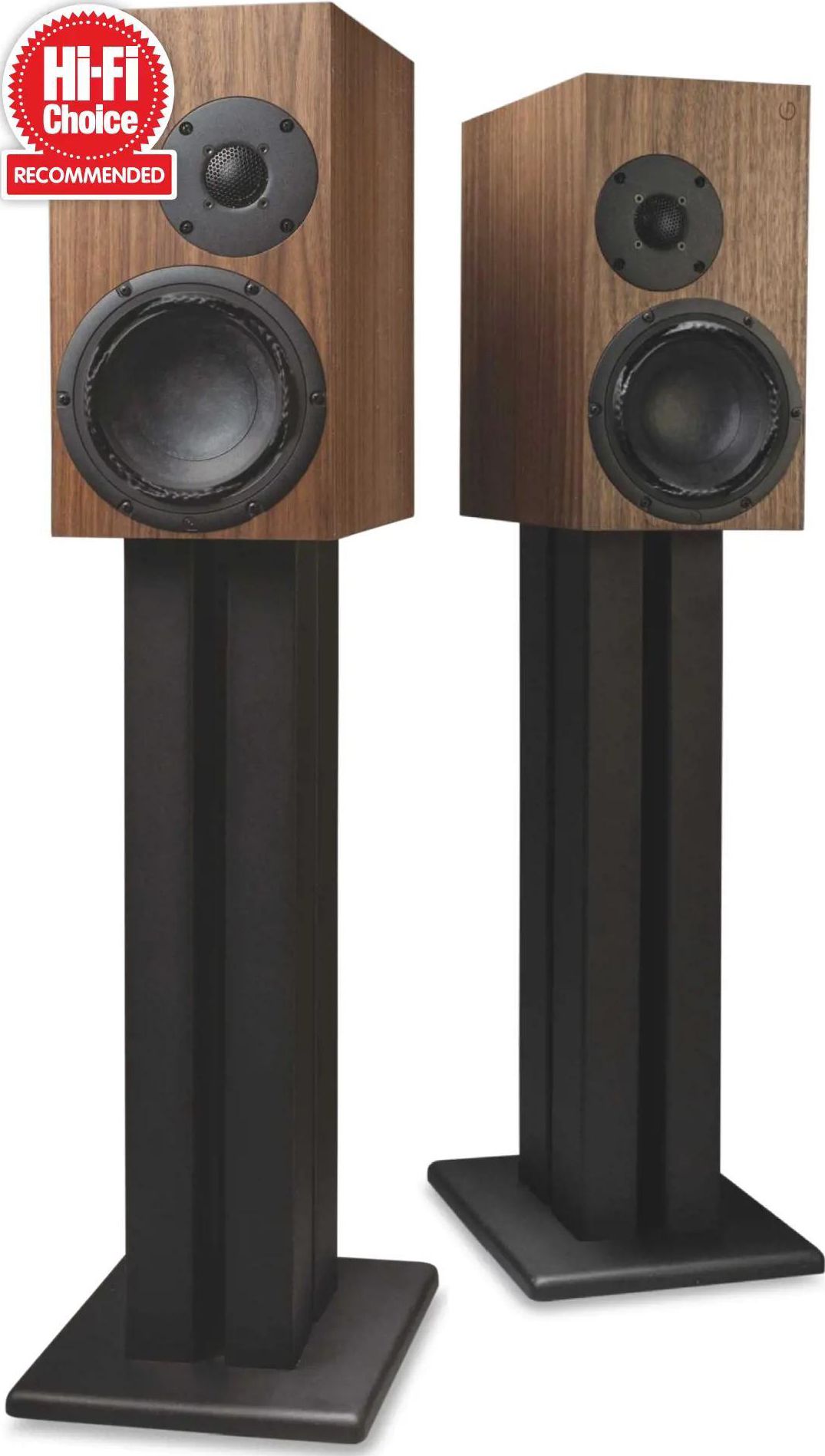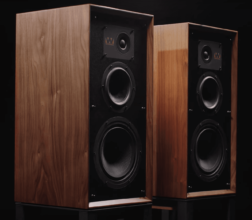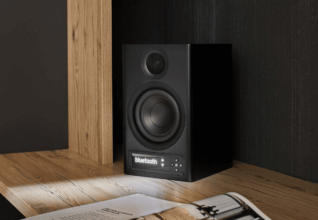OePhi Transcendence 2 Loudspeaker Review
David Vivian wonders if Danish brand OePhi’s Transcendence 2 stand mount can live up to the promise of its name.

Suggesting that a passive loudspeaker and the cable feeding it should be a synergistic alliance isn’t a new idea, and numerous speaker makers over the years have also produced their cables to make it so. Not that tweak-loving audiophiles have necessarily taken much notice, preferring to experiment rather than tow a company line.
Few speaker makers have taken the speaker-cable entente cordial quite as seriously as Danish brand OePhi, which doesn’t only believe that having the two components singing from the same hymn sheet – especially in time – is desirable. Still, the company reckons it’s essential to unlock the full performance potential. It isn’t that OePhi’s founder and head Joakim Juhl has a thing about cables, it also informs OePhi’s overarching philosophy and pursuit of true (rather than aspirational) high-end performance at honest, real-world prices.
Origin Denmark
Type 2-way stand mount loudspeaker
Weight 8 kg each
Dimensions (WxHxD) 185 x 350 x 300 mm
Features
– Aluminium dome tweeter with titanium voice coil former
– 165mm Purifi mid/bass driver
Quoted Sensitivity 87dB/1W/1M (8 ohm)
Distributor VALHiFi, Airt Audio
Website OePhi VALHiFi Airt Audio
The Transcendence 2 is OePhi’s middle-tier stand mount, ostensibly a mid-sized, two-way, ported design with some distinguishing aesthetic features. Most eye-catching is a woofer cone with a surround resembling a burst tire that’s traveled 100 miles on a gravel track. It’s described as being asymmetric. No kidding. Second, the woofer and offset tweeter seem, oddly, to have slid to the lower part of the baffle, leaving a large area of pristine wood veneer up top. We’ll get back to the ‘why’, but it is safe to say that OePhi’s stated goal of making speakers devoid of a particular ‘sound’ that seeks to preserve ‘signal integrity’ end to end is thus served.
Few standmounts do the ‘moment of clarity’ thing quite as arrestingly as this
The custom-spec 165mm ‘wrecked tire’ woofer is sourced from a brand named Purifi, of which heavy hitter Bruno Putzeys – designer of the Hypex Class D amp and Kii Three speaker -is a star backer. Contrary to doubts stemming from its counterintuitive appearance, the driver is rapidly attracting the interest of specialist speaker makers and hi-fi cognoscenti for next-level reductions in harmonic and intermodulation distortion. The surround itself has been designed by Lars Risbo, and its advantage is that it can attack the problem of changes in the radiating surface area as the woofer’s paper cone moves in and out. With conventional half-roll surrounds, the surround will increase effective surface area as the cone moves inwards, while it decreases when moving outwards. This, explains Joakim, contributes to second-order harmonic distortion. However, with the surrounding topology of the Purifi woofer, there is virtually no change in the surface area with cone travel and thus almost no contribution to second-order harmonic distortion despite the cone’s 10mm potential excursion. There are also notable improvements in damping and the suppression of cone edge resonances. The cone, incidentally, has been divested of its standard polypropylene coating by Purifi for OePhi’s application.

The SEAS-sourced metal dome tweeter gets a complete strip down and rebuild from OePhi. “Our experience is that even the most advanced drivers often still have room for improvement,’ explains Joakim. “For dome tweeters, they tend to suffer from dynamic compression, which causes harmonic and time-domain distortion. What we effectively achieve is to take an already state-of-the-art tweeter and significantly lower second order distortion while also achieving much less power compression so that when the music calls for fast transients, the tweeter can follow the waveform much more accurately.’”
The low placement of the drivers on the cabinet baffle looks a little strange. Still, it is done to benefit diffraction, while the deep cabinet’s relatively lightweight build works against the slow absorption and release of energy that occurs with bulkier designs. Finally, a pair of hardly inconspicuous Transcendence 2 speaker cables (from £) are supplied for review. “We are the only ones who focus on a cable’s time domain performance,” claims Joakim. “By understanding and tightly controlling our cable’s time domain performances, we have found that we can almost completely remove cable’s sound or audible influence on the signal they transmit.”
Sound quality
Very few compact stand mounts I’ve encountered over the years – even those with pukka recording studio monitor provenance – do the ‘moment of clarity’ thing quite as arrestingly as this. No slow-bum, get-to-know-you gig here. No sweetly flavored sonic proposal was devised to accumulate favor with familiarity. Barely 10 seconds into a Tidal Master stream of Bob James’ Angela, and it’s an immediate reset that, initially, has me doubting my senses. I think it’s because what I expect to hear is merely a better class of compromise management, closer tolerance versions of the approximations that mimic live music reality. And, in essence, that’s usually the bare bones of the matter. Executed well, such skilled ‘sonic engineering’ can sound five-star impressive.
If you’re happy with a more imposing standmount, Audio Physic’s Spark 6 and Fyne Audio’s F1-8 (HFC 496) are hot contenders. Both plow their path technically and stylistically, and their ability to blend stand mount and floor stander strengths are rare assets. Other contenders that might grace your £ -£k shortlist include KEF’s Reference 1 (HFC 414), Audiovector’s R1 Arrete and the Wilson Benesch Precision P1.0. All are terrific performers with huge musical insight, but only the KEF and Spark 6 get close to matching the OePhi’s immaculate timing and transparency.
But OePhi’s stated all-embracing, cable-matched approach appears to resolve to a deeper level, allowing a presentation that feels truly clean, clear, open, and pure, bereft of benign hype and manipulation and, indeed, the faintest hint of temporal drag or blur. What stuns is a similar level of coherence, speed, and impulse accuracy to that of a point source single driver design like those made by Eclipse. The difference that fills out the sonic landscape so rewardingly is a broader bandwidth with greater dynamic potential and the presence of a crossover designed to impose an essentially flat frequency response that has convincing low-end weight, extension, and agility yet, in the treble, goes fearlessly all the way, demurring from the often-preferred top end roll-off to massage ‘warmth’ artificially.
Time domain precision certainly takes center stage. Caravan Palace’s Supersonics sounds as crisp as a freshly dispensed ATM tenner. I’ve rarely felt my right foot zone into the tempo so enthusiastically. But it isn’t just about foot-tapping compunction. The tighter the timing, the better the musical flow and fluency, but it also nets gains in soundstage air, imaging solidity, dimensionality, and tonal texture. In other words, in sheer realism. A perfect playground for Caravan Palace and just about everything else.
Conclusion
There are more charismatic stand mounts. Some might even give you a cozy cuddle if teamed with sympathetic amplification. Others appear to be hyper-detailed if, ultimately, rather contrived and tiring. And, yes, it’s all a matter of taste. But, in my experience, Transcendence 2 has no peer in its price class or several above for stone-cold realism and musical fluency. In short, it’s left me questioning if it’s the most engrossing and irresistibly addictive small speaker I’ve ever reviewed.






